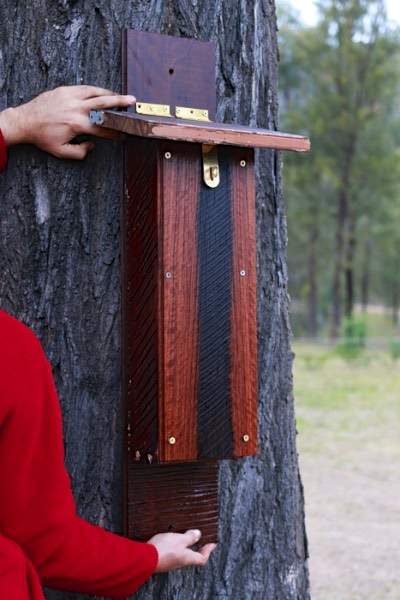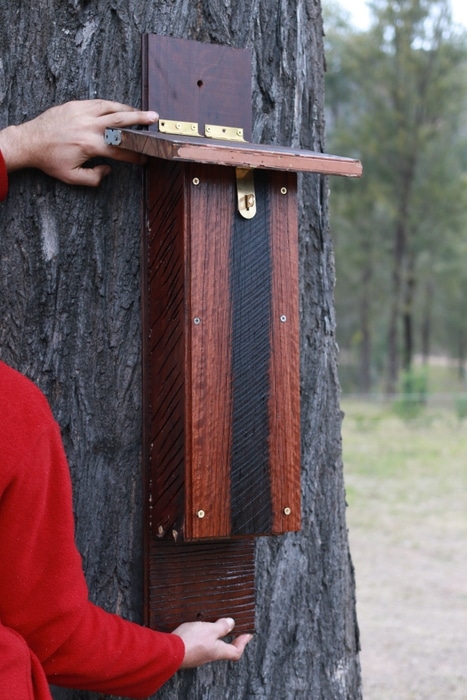How to build a microbat box
Posted on 12 November, 2020 by Frances
Since beginning our nest box program back in 2010, Connecting Country has installed over 450 boxes on private and public land across the Mount Alexander region. The nest boxes were designed specifically for use by the threatened Brush-tailed Phascogale (also known as the Tuan), which is a nocturnal hollow-dependent marsupial native to our area.
The nest boxes provide supplementary habitat for the Tuans and other native animals such as the Sugar Glider. It is anticipated that providing additional nesting sites, albeit artificial, will lead to an increase in local Tuan populations and distribution. The nest boxes were located across the landscape systematically so we can examine some of the factors that influence their use.
We recently discovered a great article from the creative folk at Milkwood regarding how to build a microbat box, which is similar to a nestbox. Milkwood point out that ‘Microbats are worth encouraging into your garden. Not only are they delightful to watch on dusk – they gobble thousands of mosquitoes, moths and other garden pests each and every night. A single microbat can eat up to 1,200 mosquitoes and small insects in an hour – which has earned them the well-deserved reputation of being nature’s mosquito busters.’
To enjoy the full article on Milkwood’s website – click here
For more information on Connecting Country’s nest box program – click here


Mount your bat box on a tree, pole or building – high enough to prevent vandalism and protect the bats from predators and floods (photo: Milkwood)








That article does not support the local nest box builder here in Castlemaine. http://www.wildlifenestboxes.com.au
Connecting Country has worked closely with Miles and his business wildlifenestboxes.com.au, installing many of his quality nest boxes across the Mount Alexander region over many years. These have formed an important part of our monitoring program for phascogales, and have provided vital habitat for many species across the shire.